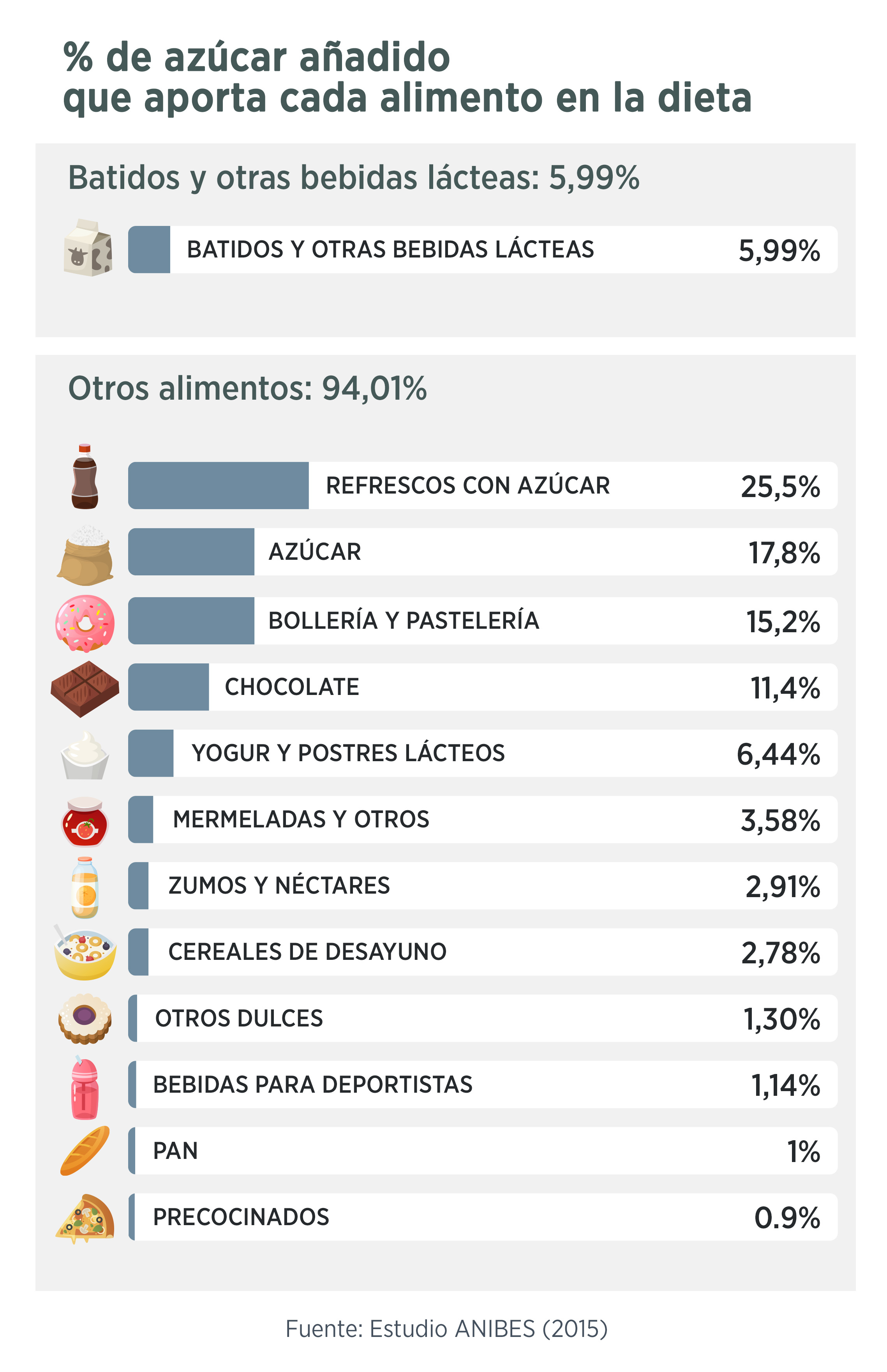BY UE STUDIO
Updated Monday,8May2023-15:22
- Share on Facebook
- Share on Twitter
- Send by email
Of the shakes we have been hearing statements such as "they have a lot of sugar", "they do not feed" or "they provide many calories". What is the truth in all this? In these times of noise and confusion, "Decisions with data" is an initiative of the Puleva Institute of Nutrition that presents objective elements of judgment in the field of food, to help make better decisions. In this first installment, shakes with 90% milk are the protagonists, because not all shakes are the same.
About half of the sugar is naturally present
A shake with 90% milk, such as the Chocolate Puleva shake, contains 9.1 g of total sugars per 100 ml. Of these, about half – 4.4 g – is lactose, commonly known as "milk sugar", which is naturally present. Lactose is excluded from the limitations on sugar consumption by the WHO (World Health Organization) and other health authorities, as it is not considered a free or added sugar1.
They represent both a low caloric intake2 and the added sugars consumed each day
Shakes with 90% milk barely account for 6% of the recommended calories (in a diet of 2000 kcal) and the added sugars consumed each, as revealed by the ANIBES study3.
According to the ANIBES study, this is the contribution of added sugars to the daily diet by type of food.
Therefore, the contribution of sugar from shakes in the diet is very limited, something that is evidenced by both the research consultancy Kantar (according to data from its "Consumer Panel", composed of 4,000 representative households of the Spanish population, which figures in less than 2 servings per week4 the average consumption of shakes, in those households in which it is present -14.7% of households, for the age group of 5 to 9 years-) as the Aladino5 study (promoted by the Spanish Agency for Food Safety and Nutrition (AESAN)).
Nutritional richness without sacrificing flavor
90% of a chocolate shake like this is milk, which translates into a high nutritional value, since it provides calcium, vitamin D, proteins of high nutritional quality or phosphorus, which should always be considered when evaluating the composition of a product.
And all this, without giving up the pleasant flavor that cocoa brings. That is why it can be a useful aid for the child to reach the recommended servings of dairy and complete the diet.
In short...
Considering this context and that shakes are synonymous with nutritional richness with a limited caloric intake, they can be part of a healthy eating pattern and options to cover the recommended dairy servings.
Sources consulted:
[1] Guideline: Sugars intake for adults and children. Geneva: World Health Organization; 2015.
[2] Food and Nutrition Board. Institute of Medicine. Dietary Reference Intakes (DRI) for energy, carbohydrate, fiber, fat, fatty acids, cholesterol, protein and amino acids. Washington: National Academy Press; 2002.
[3] Ruiz E, Rodríguez P, Valero T, Ávila JM, Aranceta-Bartrina J, Gil A, González-Gross M, Ortega RM, Serra-Majem Ll, Vera-Moreiras G. Dietary Intake of Individual (Free and Intrinsic) Sugars and Food Sources in the Spanish Population: Findings from the ANIBES Study. Nutrients, 2017;9(3):275; DOI:10.3390/NU9030275.
[4] Kantar WorldPanel. Usage Panel 2021.
[5] ALADINO Study (2019). https://www.aesan.gob.es/AECOSAN/web/nutricion/detalle/aladino_2019.htm (Table 18. Frequency of habitual consumption of some foods).
Made by UE Studio
This text has been developed by UE Studio, creative branded content and content marketing firm of Unidad Editorial, for INSTITUTO PULEVA DE NUTRICIÓN.
According to the criteria of The Trust Project
Learn more

